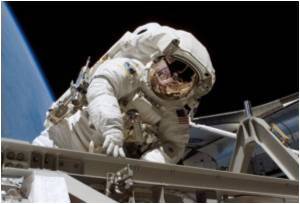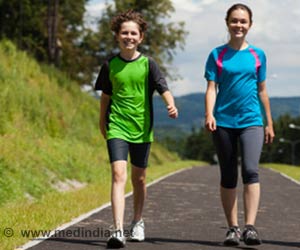
On the back of her jumpsuit, teacher Michelle Luke taped a drawing made by her pupils at Manhattan Beach Middle School, southwest of Los Angeles, showing two figures taking a giant weightless leap into space.
But with only a couple of hours to go before the flight, her smile was still a little tense.
"I expect to see a lot of crazy things happening and do things that I've never done before," she said at Long Beach airport, south of LA, where defense group Northrop Grumman organized the science-boosting flights.
During the flight -- in which a specially-decked out plane does a series of parabolic climbs and dives, the only way to experience weightlessness without going into space -- the body is subject to 1.8 G forces.
That makes the body feel nearly twice as heavy as it is -- the downside in the steep climb phase, before participants fly up off the floor, shrieking as they float around the cabin like astronauts in the International Space Station.
Advertisement
"I love roller coasters, I love being on boats, but I'm scared that I'm going to get sick. Although I heard that you do not get motion sickness when you're up there."
Advertisement
Once it reaches 7,600 meters in altitude it cuts the power, continuing upwards for another 1,000 meters before peaking and dropping into freefall, at which point the pilot re-engages the engines.
But floating in the air -- for 20 seconds, when the aircraft is at the top of its parabola -- helps them forget everything.
"It was a dream come true for me," said Amy Rafkin of Belvedere Middle School, who like her colleagues used the 12 parabola-topping weightless spells to carry out experiments which she can show her pupils.
With relatively brief periods of zero gravity, the experiments are inevitably simple: they include testing how various liquids or a gyroscope respond to the plane's changing environment.
Participants can also test Sir Isaac Newton?s Laws of Motion, in activities recorded on video camera so teachers can use the taped experiences to help fire up the students' interest in the classroom.
"It shows them that science is actually applicable. Because in general, they sit in the classroom and say 'Oh great, but what am I gonna do with it?' But this is actual application of science in the real world," said Rafkin.
"And in our real world, we need scientists, we need engineers," she added.
Promoting science as a vocation is the main aim of the flight program, run by the Northrop Grumman Foundation, which has organized the zero-gravity flights for some 1,300 teachers over six years.
"We started this program as a way to give teachers a boost in the classroom. Really give young people the opportunity to see that science can be fun, that it can be cool," said Sandra J. Evers-Manly, president of the Foundation.
"We know that fewer and fewer young people are engaged in maths and science... Young people learn through the eyes of their teachers," she added.
For Chappelear, the teaching of science is a national problem, and the US educational system is not properly designed for the challenge.
"In the US, we are talking a lot about math scores, and English scores and our schools' responses to that is a test," she said.
"We have to get our kids ready for that test and when we look how well schools are doing, that's kind of the only measurement that we have... But those tests don't measure innovation and a lot of what science teaches."
Source-AFP





